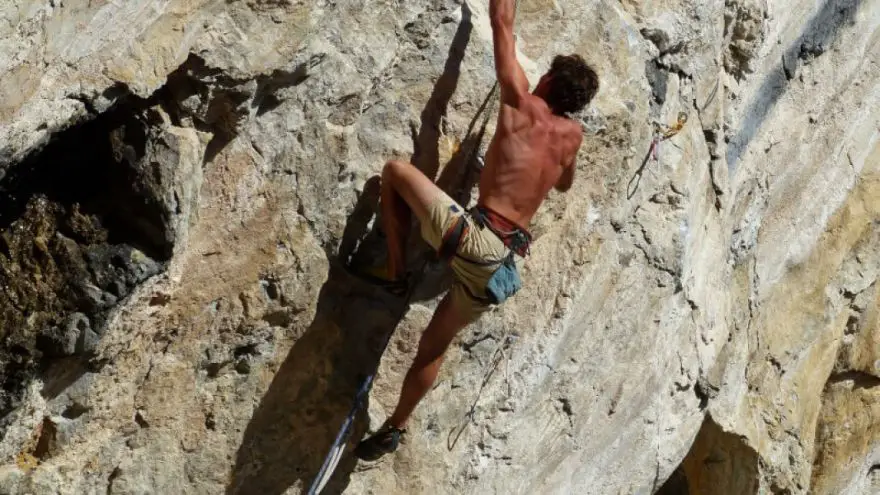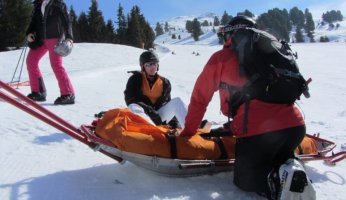Understanding US Rock Climbing Grading Systems
 Understanding US Rock Climbing Grading Systems
gearweare.net
Understanding US Rock Climbing Grading Systems
gearweare.net
Learning to understand and interpret the systems used to grade the difficulty of a rock climb is important to success within the sport. It allows you to gauge how well you will do on a climb before roping up, which helps you avoid bail outs and the loss of gear. Besides alerting you to moves that may be too difficult, the grading system also relays information on how protected the climb will be and how long it may take. Furthermore, it can get you on climbs you may otherwise have ignored by alerting you to ones that are particularly quality or classic.
The basics of climbing grading systems are easy to learn, however the way each grade feels when you are actually climbing depends on the type of rock, style of climbing, area, and even when the route was established. Because of this, the grades should not be thought of as unquestionable truth, but rather as guidelines that tell you which climbs you will have the most fun on.
Table of Contents
The Yosemite Decimal System
The Yosemite Decimal System breaks down the type of terrain one can travel across into 5 classifications:
- Class 1 – You are walking across flat ground.
- Class 2 – You are now hiking. The terrain can be steep and hands are sometimes necessary to scramble safely.
- Class 3 – The exposure is moderate, and if you slip you may fall a short distance. Hands are used but a rope is not necessary.
- Class 4 – The exposure is severe, and a fall will result is catastrophic injury of death. The use of a rope is recommended.
- Class 5 – This is technical climbing. Hands and feet are used to move up vertical rock and a rope with a belay system is necessary to protect you from ground falls.
All roped free climbing falls within class 5. Climbs are then further broken down into subcategories that explain how hard the climb is. Most beginner climbers who are in good shape can do well on a 5.8 or 5.9 right away, however the grades go all the way down to 5.1, which is essentially like climbing a ladder.
Moderate to advanced climbers do well on 5.10s, 5.11s, and 5.12s, while the grades of 5.13 and higher are reserved for professionals. Most climbs 5.10 or above will also have an “a”, “b”, “c”, or “d’ attached to the difficulty score. The sequence of difficulty therefore becomes 5.10a, 5.10b, 5.10c, 5.10d, 5.11a, and so on.
The grade that a climb receives is based on the hardest move on that climb. This is important because a climb that feels like a 5.9 most of the way, then has a few 5.11 moves, will be categorized as a 5.11. This is done to stop climbers from getting on something that may look doable, but is actually too difficult for them.
The difficulty is of a climb is first decided by the person who puts up the first ascent, and then confirmed by other climbers as more people try it out. If a consensus cannot be reached, sometimes a climb will receive a “+” or a “-“ instead of a letter. This indicates that a climb is on the harder or easier end of a difficulty rating, but that it alludes clear classification. For example, a 5.10+ is equivalent to a 5.10c/d, a 5.10- is equivalent to a 5.10a/b, and a 5.10 is equivalent to a 5.10b/c.
At the forefront of climbing, very few people are able to repeat the climbs done, so it is hard to know if the grades are correct. The hardest roped climb ever done to date is Silence, a 5.15d put up by Adam Ondra in Flatanger, Norway.
Protection Rating:
Climbs graded in the Yosemite Decimal System may have a few letters following the number that look like movie ratings. These letters tell you if the climb is particularly dangerous or difficult to protect. The protection ratings you may see are as follows:
- G – The protection is good and makes the you feel safe. This rating is typically omitted.
- PG – Overall the protection is decent, but there may a short section or two where the you are exposed to a dangerous fall.
- PG-13 – The potential falls may be large, but they are also safe.
- R – This climb is “runout”, meaning you must move high above their last piece of protection, and a fall will likely cause injury.
- X – Almost impossible to protect, a fall from this climb will likely be fatal. Don’t fall.
Grade:
A climb may also have a grade, which gives information on how long the climb will take. Grades are reserved for multi-pitch climbs, where making sure you have enough time to finish before the sun goes down or all the gear you need to set up a bivouac campsite is critical. The grades are as follows:
- Grade I: 1-2 hours; This grade is almost never used
- Grade II: Less than half a day; This grade is typically omitted as well
- Grade III: A half day
- Grade IV: A full day
- Grade V: Two days
- Grade VI: Multiple days
- Grade VII: More than a week
The V Scale (The Hueco Scale)
Bouldering utilizes a different classification system than ropes climbing. Called the V Scale, the ratings start at V0 and become more difficult as the number increases. The “V”, which is a shout-out to John “Vermin” Sherman, who helped establish the bouldering mecca of Hueco Tanks, Texas, lets the climber know that they are looking a boulder problem. A “+” or “-“ may also be added to the rating a problem gets. These indicate that the climb is on the harder or easier end of that level of difficulty.
The climbs one does when bouldering are short and quite difficult. While roped routs require endurance, boulder problems are all about strength. For this reason, a V0 is about as hard as the crux of a 5.9, a V1 is equivalent to 5.10s, V2s and V3s are as difficult as 5.11s, and so on.
The hardest boulder problem completed to date is a V17 called Burden of Dreams. It was recently put up by Nalle Hukkataival in Lappnor, Finland.
Star Rating
Climbs can get up to 5 stars. These ratings are there to let you know that a particular rout or problem is worth doing. They are also sometimes added to classic climbs or to climbs that have a lot of history. Stars are applied to roped routs and to boulder problems.
Climbs that only have 1 or 2 stars are often uncomfortable or low quality. If a climb looks fun to you though, never write it off because it has just a few stars.
Foreign Grading Systems
Although we are not going to explain them here, it is important to note that other countries utilize different systems for gauging the difficulty of climbs. A conversion chart for the most common systems utilized around the world can be found here.











